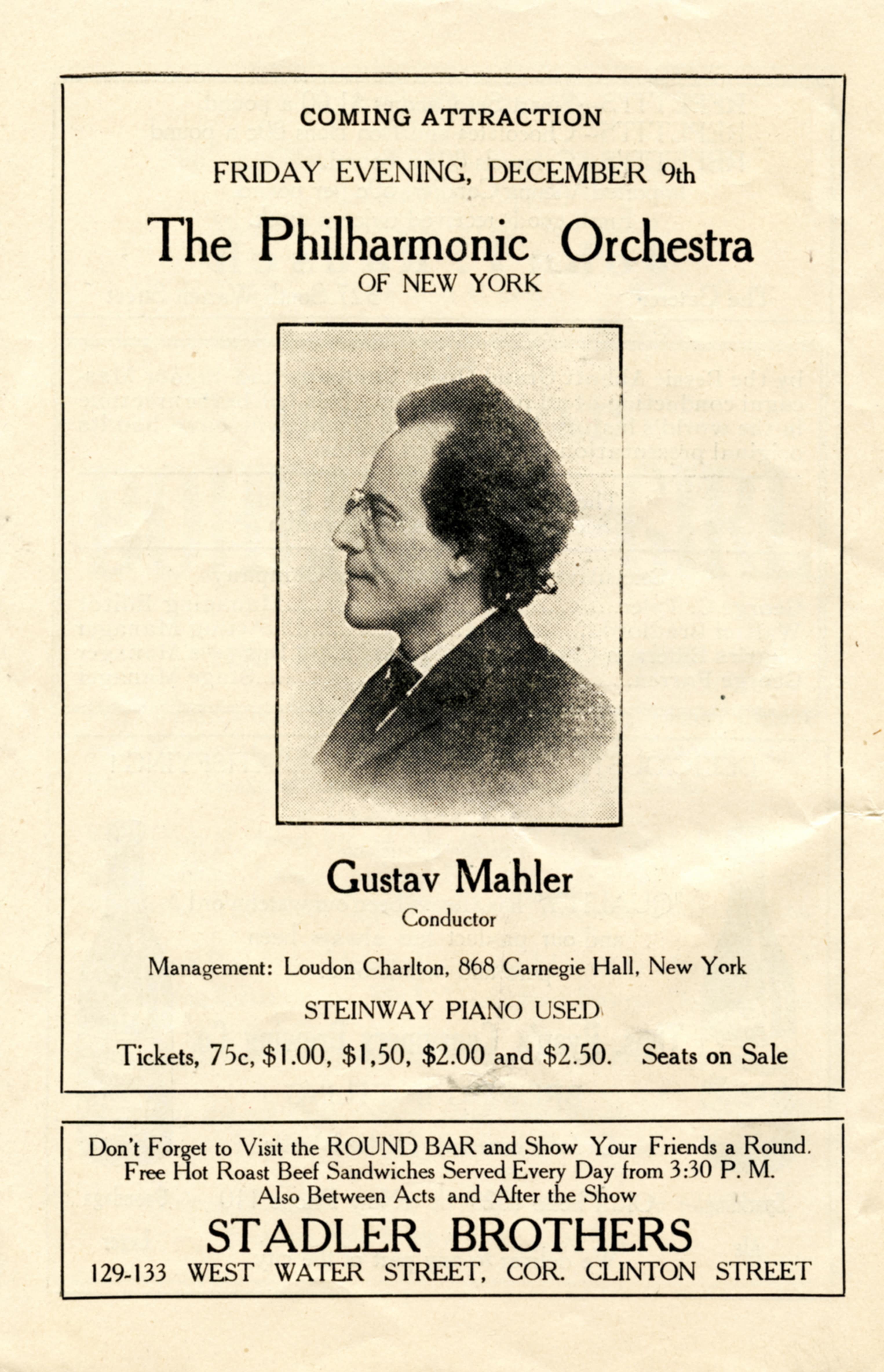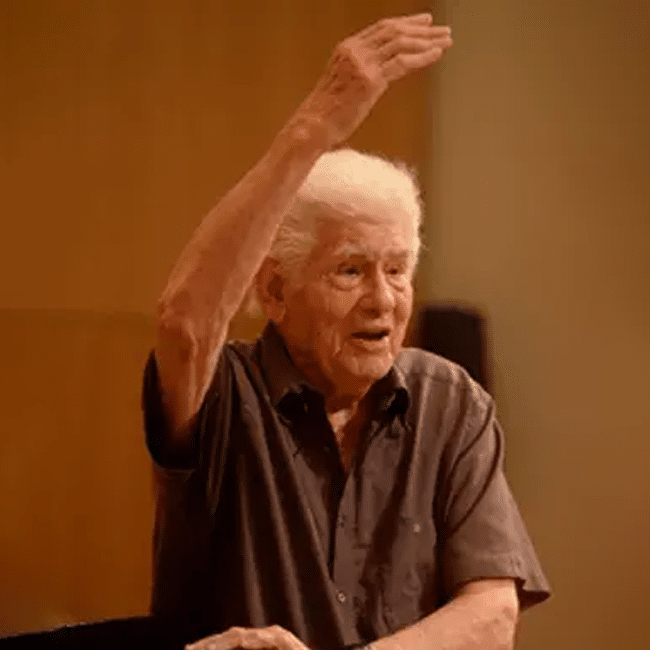Abolish those sleeve notes
mainI’ve just about had it with the notes in three languages that record labels append to new releases. Apart from the pages telling me how this or that artist and orchestra is ‘one of the world’s leading….’, the music notes seldom give any information that I don’t know already, or that I actually need to know.
Take this new Beethoven album by the turbulent Turkish pianist, Fazil Say. the first movement of the C minor concerto contains a cadenza so tantalising and intelligent that I turned straight to the booklet to see who composed it.
Nothing. Not a word. Plenty about compositional process and ‘a radiant C major’, a legal note to inform us that the conductor Giannandrea Noseda appears by courtesy of another label, but not a dicky-bird about the cadenza.
I assume it’s by Fazil. If so, it should say so.
Dammit, what is the purpose of these otiose sleeve notes?






For what it’s worth, we at Odradek try pretty hard with our notes (in three languages no less!). But I’d appreciate opinions on especially the bio as an artform – artist bios for me are about as dull to read as anything I can think of, yet a cd would be strange without, and I find it difficult to innovate here. What is it that you want to read and know, especially regarding an artist that is unknown to you? Aside from avoiding the obvious clichés…
They are so ‘NAIVE’ in writing proper and informative booklet notes..
I do not wish to lose my privileges, including reading the commentaries of NL, however I would respectfully suggest that notes on Beethoven by a Turkish pianist constitute a special case. After all Beethoven was a scion of the Ottoman Empire. You didn’t know? That is why Van appears in his name, after the Turkish lake of that name.
Notes that accompany CDs, and LPs and sets of 78s before them, are quite useful for first recordings or for anything newly written, but are not necessary in Beethoven’s case except for beginners. We were all beginners once. I don’t read much music criticism these days, unless written by a musicologist. It gives music journalism a bad name to pick a few cherries out of the sleeve notes. I agree that the need to market in English, German and French has reduced the size of the font to an unfortunate degree. So why not supply the notes free by pdf, heralded by the age of the download.
The notes are not by Fazil.
… or the “van” could be in his name because Ludwig van Beethoven’s grandfather (also named Ludwig!) was Dutch, hence the Dutch “van” and the Dutch “Beethoven” …
“Van” is just Dutch for “from”…Turkish lake?!
[whoosh]
That was the humor flying over people’s heads.
Well, of course I know that Beethoven’s grandfather’s family came from within the borders of modern Belgium, but thanks for tending a wayward member of the flock. One of the spellings of his name was Lodewijk. By the way, Donizetti’s brother was appointed to a Turkish court to introduce the Turks to western classical music in the year of Beethoven’s death, 1827, so they could have known his music about as long as we have….
It may be that you’re not their target audience, that they may be aiming at people who are less well-versed.
Then again, it may just be incompetence on their part.
I wonder if the label made a conscious decision to make Fazil Say look like Johnny Cash.
Tacked on to the de-rigeur description of a soloist as “one of the world’s leading …,” one frequently finds a recitation of 25 or so of the “world’s leading orchestras” with whom the soloist has played, followed up with a helpful list of 10 to 15 “prestigious” festivals whose stages he or she has graced, followed in turn by a list of a dozen or so conductors (all world-famous, naturally) with whom he or she has collaborated. Five or so world-famous teachers with whom he or she studied must of course also be mentioned. Rarely, however, in the case of a piano soloist does one read in the liner notes any mention of what make of piano was used for the recording–a far more interesting detail than knowing that he or she recently–or not so recently–appeared in that world-famous mecca of the arts, Fargo.
Norman, there is a range of notes from nonexistent to outstanding. Beethoven’s music is so onmipresent that no notes may be needed, but I review a lot of new and unfamiliar music and find the notes to most of those recordings quite helpful in establishing facts and often clarifying formal matters.
TOTALLY my own pet peeve! Sleeve notes are Peeve notes because much of the time they tell you bubkes. I can at least address this concern by producing my own good notes in my different-genre albums of klezmer. Probably more common to do this because we assume that our audience knows less and, as well, wishes to know more about what they are listening to. Hence I chose put in print the various historic flutes I was playing for each track and where the tune stemmed from, as in which historic folio of printed music of which we have so little. I did not, apparently, win awards with my last album because I spoke some notes at the end of the CD. Seemed like a great idea of friendly information but in the end folks have to listen to it every time (!) Lastly, I understand the need to expound on the artists’ achievements. People sell music. Information about the music does not sell future concerts, sadly. However, the beefing up of the bio, as you say, has gotten so exhaustive in superlatives that those bios become less and less meaningful to those in the know. Sign me someone who also informs during concerts. It’s not just listening to the music but being encouraged to listen with more informed ears, although I try not to lecture for sure.
I agree totally. The notes should let us know what’s unique—or at least, arresting—about the performance we’re hearing. What is the artist’s vision? Why are they recording THIS work (as oppose to something else). When brilliant pianist Piotr Anderszewski records a Mozart piano concerto (for instance) and the orchestra sounds very different, why don’t the notes talk about why that is, what is his vision as conductor that results in that different sound?
Another pet peeve I have about notes are the GHASTLY German (or Italian) to English translations. The marvelous tenor Daniel Behle records Strauss lieder and the notes talk about Strauss as a “bandmaster,” and have sentences that go on and on and on and end up being gobbledy-gook, because the recording company can’t be bothered to ask someone for whom English is the native language to take a look at the translation. Or even, GASP!, do the translation.
It’s a wasted opportunity to add value to their recordings.
Norman, I sympathize with your tantrum even if I disagree. What one wants are GOOD THOROUGH notes. And one does find them. Yevgeny Sudbin writes the notes on his cd’s for BIS; they are about the music on the discs, may cover pianists associated with them, they are informative and witty, a delight to read. Yesterday I received an album of Late Beethoven Sonatas played by Igor Levit on Sony with an interesting essay on Beethoven and the works by the esteemed Martin Geck, whose interesting and eloquent biography of Schumann I read several months ago.
I like notes when they contribute something. I don’t know how those responsibilities are apportioned within recording companies, but I suspect the producer has final say-so on what goes in the final package, one would hope with the cooperation from the artist (Glenn Gould wrote his own notes). I would wish all recordings would contain instrument information, e.g. I like to know what piano is being used. I also like to know venue information. So Norman, please, don’t cut your nose to spite your face, as the saying goes.
Not sure abolishing is the right way to go. A lot of serious record collectors like me do not have have formal musical training beyond lessons learned as children. Those notes, however basic, provide some insights and even a hint at what might be special about any particular recording. This is especially helpful for warhorse pieces. But of course something as important as a unique cadenza does deserve a bit of text on its own, especially if a young new artist has created something new or special.
I have many CDs in my collection but prefer LPs not only for the sound but usually for the better notes. The cd format does not lend itself to long notes or text that are large enough to read.
Still, this sounds like a good disc to buy for the music.
Once upon a time, when we had LPs, liner notes were intelligent and informative. Notes for the phenomenal for the Telefunken Bach works were themselves phenomenal. They told you about Bach, his era, the work, performance, the use of period instruments (with which I have disagreed for millennia!) etc. For the organ works, the notes would tell you about the instrument on which it was played and the specifications. But, like the song goes, that WAS once upon a time. (Glorious things of thee are spoken, Telefunken Das Alte Werk… Alas, nicht mehr!) The notes in CDs are impossible for these past middle-age eyes to read, and yes, Norman, theyre a lot of bunk.
Then too, our local classical music station used to have announcers, themselves professional musicians, who would tell you what they were playing, the work, performance, performer(s) then give you the record label & number after. It’s how the Pachelbel Kanon took off. Now, the station is Classical Top 40. It has endured so many putsches and funding cuts that they might as well be hiring DJs from commercial Top 40 stations.
It’s not just sleeve notes. Most printed programs fail to provide this information, as well. Even if the cadenzas are ones “everyone knows,” how hard can it be to insert a line saying “Cadenzas by …”?
They’re written for an audience they don’t have yet. DG, ECM, Philips…you think they care about YOU? They already got you. They want the others as well, and this is one of the ways they appeal to them.
Compare with DG’s CD of Brahms Op.77 in which the notes tell us in Vadim Repin’s commentary, not only that he plays the Heifetz cadenza, but WHY he chose it. I have a number of vintage 78rpm concerto sets and a spot check showed that the label with the cadenza invariably identifies what is played. e.g. the shellac set of the BeethovenVln Cto. has “Cadenza by Auer-Edit. & rev. Heifetz.”
Hey, hey, HEY… ease up now everybody. I don’t really know of a label nowadays who doesn’t care what its readers think. They try to inform those who buy their merchandise what’s on the disc, to the best of their ability, and can’t go apologising to some of these people because they already know the stuff. Let me also remind you that most artists, especially young artists, struggle to make a career and keep it going by any means they can manage — teaching in conservatoires and/or privately as well as having to keep up daily practice. OF COURSE they want you to know what they’ve been up to and if they write that this or that orchestra is a leading orchestra it’s because it happens to BE a leading orchestra — how else are they going to make their mark.
No, listening to the disc by itself is not enough. Knowing as much as possible about the works themselves enhances listening, and knowing as much as possible about the artist who is performing them is also necessary, in my view. Keeping biographies concise is always a challenge, I agree but if the buyer enjoys the performance and there is a bit of vital information missing they can always contact the label concerned, to find out. Chances are they haven’t omitted it on purpose — nobody is perfect.
Norman, who can write about anything that you don’t already know?
Well, judging from the quantity and quality of the comments from readers of Slipped Disc who are not performers but enjoy commenting knowledgeably about music, I’d say there should be no shortage of competent sleeve note writers in the world.
I can’t stand the idea of having a concert or doing a cd recording and have someone else writing the notes. The other way round: I sometimes write notes for others, and I’m feeling really bad because when I write about the music I don’t have a clue what the musicians think about it. In fact I once wrote a printed program for a piano recital where one of my favorite pieces (one that I had played in my exam) was performed. In the end I had to conclude that the pianist played a completely different piece than I had described. Fortunately I could assume that nobody noticed …
Norman, I am with you on useless sleeve notes. And that’s mostly the case. But not always.
There are exceptions, sometimes excellent ones, especially when it comes to less known music, or new interpretive approaches. How about a new posting calling your readers for good recent program notes? I’ll be happy to look into my collection for a few recent good examples.
I know that sleeve notes on many recent releases can be frustrating to read. However I wouldn’t do away with them. Beginners would benefit from a blow-by-blow account of what is happening in the music. And yes, I know that CD booklets don’t permit long notes like those in LP sleeves. One solution would be to digitise an entire archive of LP sleeve notes so that you can access them when reading about a piece.
There are often copious program notes online with musical examples. For example, if NL will permit the link) (chosen at random) http://en.wikipedia.org/wiki/Symphony_No._8_(Bruckner). What they won’t tell you is which cadenza has chosen. wiki alone lists fourteen cadenzas other than LvB’s own. Say’s obviously not among them.
I would like to nominate my own orchestra as Best in Catagory for BAD program notes. We recently did Mahler 9 and the program notes said that the symphony was completed in the spring of 2010 and that Mahler died shortly afterwards, in 2011.
One particularly sarcastic reviewer had a field day with this, hailing the “flavor of a world premiere” in our performances. Our bad program notes continue to be a point of ridicule for him, which he does with great flair.
I’m glad someone is paying attention. Bad program notes can mar the whole concertgoing experience. Also as a musician, it’s really embarrassing to play a great Mahler 9 & have the bad program notes get center stage.
The upside of this story is that our management listened and now whenever they can, they hire the sarcastic reviewer’s editor, a noted regional music commentator. Big improvement.
Similarly, the West Australian Opera, in their 2011 brochure, advertised (for 2012) a new production of Elektra by Johann Straus (sic).
The fulsome and florid program notes for the 1929 Victor album set M-59 (Stokowski conducts Bach) cheerfully inform us that J.S. was born March 21, 1865 and died in 1850.
So, who wrote the cadenza?
I am happy to read that you liked the cadenza! It is indeed by Fazil Say and published by Schott Music.
Rather than having more trees dying to provide paper notes which may or not be useful or interesting for me to read, I’d much rather buy the type of CDs where one can pop the CD in the computer and not only listen to the music but access (or not as the case may be) data such as a) traditional programme notes, which edition is used etc b) info about the performer c) in the case of instrumentalists – details/pictures of the instrument used – especially appreciated by string players, plus any other enterprising content which actually might be entertaining and educating.
I wonder if it works out cheaper to put data on a CD than to print copies of a 30 page booklet.
Undoubtedly cheaper to put it all on a data CD than to print booklets. I’ve run across this a number of times, I usually just ignore the “extra” CD which usually consists of texts and translations of sung material, because I can just pull libretti, song texts or scores off the shelf if I want them. Recent issues of historic recordings by Barber and Bernstein had a CD-ROM with extensive and really interesting notes. Troglodyte that I am, I printed the whole thing out each time.
As a frequent writer of program notes, both for recordings and for concerts, I am often frustrated not only to have no idea who wrote the cadenza (since no one tells me), but, even worse, not to hear it at all, because the notes are usually commissioned and written without my have any chance to hear the performance. This is particularly true with standard repertory works, since the notes are assumed to be designed to introduce the listener to the work itself, not to evaluate the performance, which is expected to be left up to the critics once the recording has been released.
I was prevailed upon to write some notes, on a subject about which I know more than enough to get a pass mark, but have no ambitions in that direction. I had first to be accepted by the soloists and their agents, plied with samples of work, etc. I wrote two essays about two composers and the works represented. The editor at the record company rejected them, on the grounds that he wanted, unmentioned hitherto, one essay about the composers and their connections, when they had virtually none and that, since I was writing for an international release, technical terms such as sonata, rondo, and cadenza would not be permitted. I wrote four drafts and several times he inserted unresearched comments which I had to remove and requested that he desist. It was a very tiresome exercise. I may never know the underlying reason. It was possible that some one had told the editor that I had noticed that the notes for one of the soloist’s previous issues had mixed up the details and dates for one of the composers, not in most music dictionaries, with a singer of the same name, who was, which made perfect nonsense.
If I had a snowball it would be aimed at the editorial panel of Grove who have not restored online all those entries on composers they cut between Grove V and New Grove I, making it desirable to have all past editions of Grove _or_ Pratt, Thompson, Baker, Slonimsky./Baker, Riemann, Blume, Fetis, Brown, Brown & Stratton, and a run of Who’s Who in Music from 1913.
Kudos for using the word “otiose.” I know that word but never see it in writing. 🙂